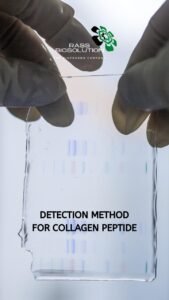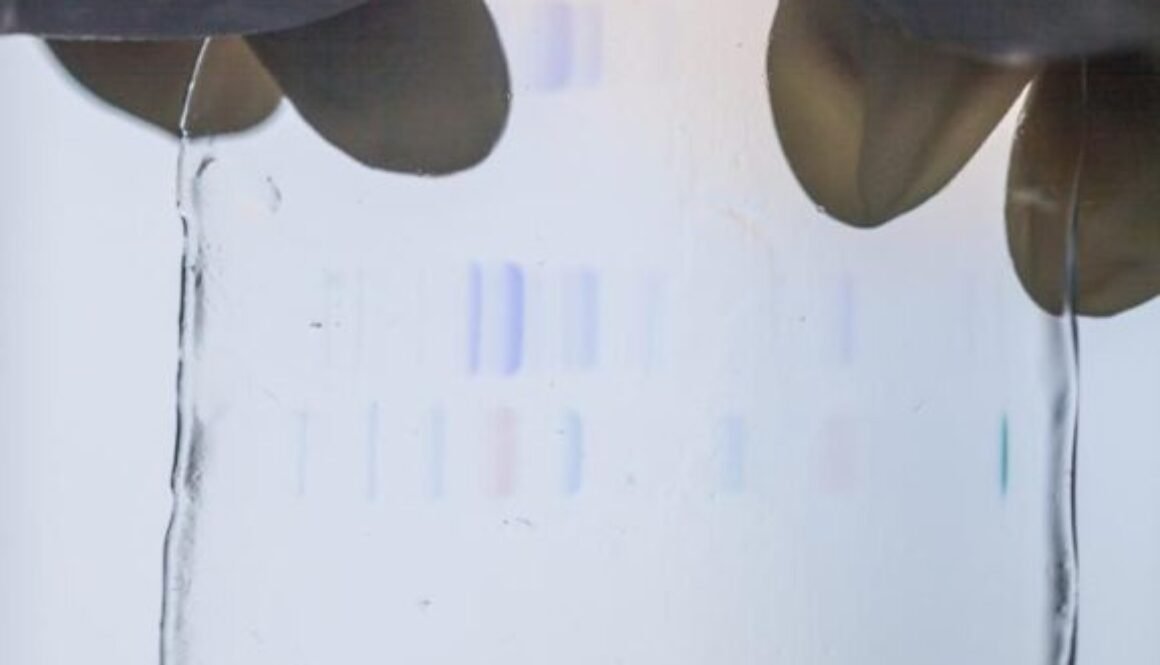ANALYTICAL TECHNIQUE TO IDENTIFY COLLAGEN PEPTIDES
There are several analytical methods for detecting and characterizing collagen peptides, each with its advantages and limitations. Here are some common techniques used for the detection of collagen peptides:

- High-Performance Liquid Chromatography (HPLC): HPLC is a widely used analytical technique for determination of peptides present in collagen hydrolysate.
- Most common and versatile method for collagen peptide analysis.
- Separation: Separates peptides based on size, hydrophobicity, and charge.
- Detection: Uses various detectors like UV, fluorescence, or mass spectrometry (MS) depending on the information needed.
- UV: Simple and inexpensive, but limited information on peptide identity.
- Fluorescence: More specific detection if the peptides are labeled with fluorescent tags.
- MS: Provides the highest level of identification and structural information about the peptides.
- Sodium Dodecyl Sulfate-Polyacrylamide Gel Electrophoresis (SDS-PAGE):
- A traditional method for separating proteins and peptides based on size. This method is routinely used for the detection of collagen peptides.
- Advantages:
- Relatively simple and inexpensive.
- Useful for visualizing the overall profile of collagen peptides in a sample.
- Limitations:
- Limited ability to differentiate between peptides with similar sizes.
- Doesn’t provide information on the amino acid sequence of the peptides.
- Capillary Electrophoresis (CE):
- Similar principles to HPLC but uses smaller capillaries for faster separations.
- Can be a good alternative to HPLC for certain collagen peptide analyses, especially when high resolution is needed.
- Mass Spectrometry (MS):
MS technique is employed to quantitate collagen-derived peptides and also at the same time characterize the peptide pattern of collagen hydrolysate using mass analyzer.
- Powerful technique for identifying and characterizing peptides.
- Often used in conjunction with HPLC (HPLC-MS) for comprehensive analysis.
- Can provide information on:
- Molecular weight of peptides
- Amino acid sequence
- Presence of post-translational modifications (e.g., hydroxylation)
Choosing the Right Method:
- Routine analysis and quantification: HPLC with UV detection is a common choice.
- Detailed identification and structural analysis: HPLC-MS is the preferred method.
- Initial screening or visualization of peptide profiles: SDS-PAGE can be a starting point.
Additional Considerations:
- Sample preparation: Crucial for accurate analysis. May involve enzymatic digestion of collagen to generate peptides and potential purification steps.
- Specificity: The choice of method depends on the desired level of specificity for the collagen peptides of interest.
Conclusion:
HPLC, particularly HPLC-MS, is the gold standard for collagen peptide analysis due to its versatility and ability to separate, identify, and quantify individual peptides. Other methods like SDS-PAGE, capillary electrophoresis, and mass spectrometry can also be utilized. However, the choice of the most suitable method depends on the specific needs of your analysis and the level of detail required.
